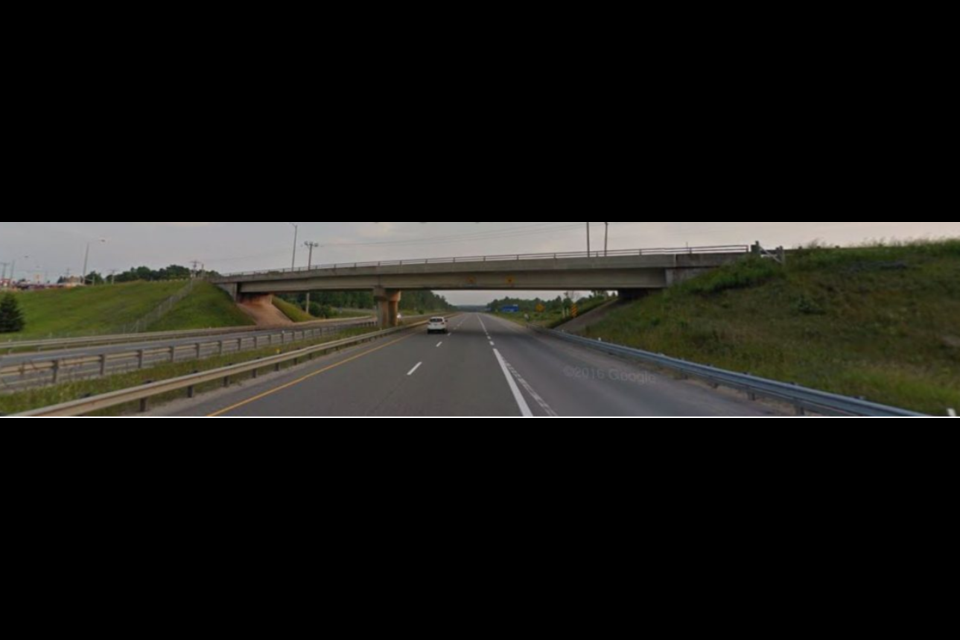The province and its consultant are pumping the brakes on the city’s request for concrete barriers on a bridge to be built over Highway 11 at West Street.
Unless the city wants to foot the bill.
Earlier this summer, council petitioned the provincial Ministry of Transportation (MTO) to erect cement barriers on the new bridge, which will feature a multi-purpose pedestrian-friendly cycling and walking trail.
Coun. Tim Lauer said at the time the barrier was necessary to keep vehicular traffic separate from pedestrian traffic.
“The reason is … we’re down to a two-metre walkway, we’re on a bridge (and) there’s nowhere to go but to jump off the bridge (if there’s a problem). I still think it’s a safety issue.”
The MTO does not agree.
"With regards to a barrier between the bike lanes and the sidewalk on the north side of the West Street structure, the Ministry would not be in favour of this addition,” said a recent letter to council from James Dowell, the senior project manager overseeing the initiative.
“It is not (MTO) practice to separate sidewalks from the through traffic on a bridge by a barrier,” he said.
Dowell’s letter said there is typically a 1.5-metre shoulder between the edge of the driving lane and the sidewalk for this type of structure.
“This is in keeping with the Canadian Highway Bridge Design Code and the MTO Structure Manual and Bridge Office Design Bulletins and/or Guidelines,” said Dowell.
“We would also like to point out that even though the bike lanes are provided on both sides of the bridge, some cyclists will still use the sidewalk. For this reason, the design includes a higher railing on both parapet walls to ensure safety of cyclists.”
Dowell said if the city wishes to pursue a barrier, “the city will be asked to pay all additional costs associated with the inclusion of the barrier. The cost would include the wider bridge, barrier walls and end treatments.”
He also warned that the ministry is under “tight time constraints” to meet their deadline of 2020 for the completion of the detailed design.
Lauer said he was “disappointed” with the MTO response.
He said he was surprised to learn the city would be on the hook to “fund the widening of the entire bridge” and not “simply pay for a few bollards” to be installed.
Lauer said he will wait to see the final design when it comes to council.
“It’s disappointing. I thought we had come up with a rather simple solution.”
Construction of the new bridge is expected to occur in 2021.
The bridge is about 50 years old and has been struck multiple times by south-bound traffic.
The structure is deteriorating more quickly than expected, which is why it’s being replaced.
